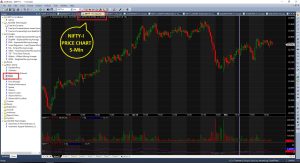Stock market has remained one of the favorite investment choices for the public for a long time. It has created wealth for many investors, returning good yields from their investment. However, there were times when fraudsters conned the investors and fooled the market causing irreversible and irreplaceable damage and those stories are told for years to come.
In this article, we will give you a bird’s-eye view of some fraudulent activities that were so impactful that when discovered, they shook the stock market. This caused adverse effects on its normal functioning and on the finances of the investors, diminishing the value of the system on the whole.
1. Harshad Mehta Scam (1992)
The Harshad Mehta scam, often referred to as the “securities scam,” is one of the most notorious financial scandals in India. Harshad Mehta, a stockbroker, manipulated stock prices by exploiting loopholes in the banking system. He used bank receipts and fake bank stamps to obtain funds from banks, which he then invested in the stock market to artificially inflate stock prices. When the scam was uncovered, the stock market crashed, leading to losses amounting to around INR 4,000 crores. The scandal led to significant changes in the regulatory framework of the Indian financial markets, including the establishment of the Securities and Exchange Board of India (SEBI) as a more powerful regulator.
Year it came to light : 1992
Key Perpetrator(s) : Harshad Mehta and some bank employees
Amount : ₹4,000 cr
Other names : Securities Scam, 1992’s Scam of Indian Stock Markets
2. Ketan Parekh Scam (2001)
Ketan Parekh, another prominent stockbroker, orchestrated a scam similar to Harshad Mehta’s. Known for his involvement in the “K-10” stocks, Parekh manipulated share prices through a complex web of front companies and borrowed heavily from banks to fuel his market activities. His manipulation of stock prices came to light after the Global Trust Bank’s involvement with Parekh’s investments was exposed, leading to a market crash and substantial financial losses. This scandal highlighted the need for better corporate governance and stricter oversight of financial institutions.
Year it came to light: 2001
Key Perpetrator(s) : Ketan Parekh
Amount : ₹40,000 cr
Other names : N.A.
3. Satyam Scam (2009)
The Satyam scandal, also known as “India’s Enron,” involved the manipulation of accounts by the IT company’s founder, Ramalinga Raju. Raju confessed to inflating the company’s revenues, profits, and profit margins for several years, creating a fictitious cash balance of over INR 5,000 crores. This revelation led to a sharp decline in Satyam’s stock prices and brought the company to the brink of collapse. The scam prompted the Indian government to overhaul corporate governance norms and implement stricter regulations for auditors and company boards.
4. NSEL Scam (2013)
The National Spot Exchange Limited (NSEL) scam involved a payment default of over INR 5,600 crores. NSEL, a commodity exchange, offered trading in commodities paired with contracts of different maturities, promising assured returns. However, it was later discovered that these contracts were paired without the actual underlying commodities, leading to a massive default when the bubble burst. The scam exposed weaknesses in the regulatory oversight of commodity exchanges and resulted in calls for better regulatory mechanisms to prevent such frauds.
5. Saradha Chit Fund Scam (2013)
While not strictly a stock market scam, the Saradha Group financial scandal had significant repercussions for investors. The Saradha Group ran a Ponzi scheme through a network of companies that collected funds from investors with the promise of high returns. When the scheme collapsed, it left thousands of investors in West Bengal and surrounding states with massive losses, estimated to be around INR 2,500 to 4,000 crores. The scandal led to increased scrutiny of chit funds and other non-banking financial companies (NBFCs).
Conclusion
These scams have had far-reaching consequences, leading to more stringent regulations and oversight in the Indian financial markets. Each scandal has exposed different vulnerabilities and has prompted reforms aimed at protecting investors and maintaining the integrity of the stock market. While regulatory frameworks have evolved over time, the lessons from these scams continue to shape the landscape of Indian finance.
Frequently Asked Questions
- What are the biggest financial scams in India?
Two of the biggest scams in India were the Harshad Mehta Scam of 1992 and the Ketan Parekh Scam of 2001.
- Can the Indian stock market be manipulated?
Indian stock markets have been manipulated in the past through pump-and-dump schemes operated over social media groups and by brokers frauding markets.
- Who protects the Indian markets from scams and frauds?
Several bodies including the Securities and Exchange Board of India (SEBI) are responsible for ensuring that fair practices are followed by investors and traders in the Indian stock market.
- Which is the biggest corporate scam in India?
The biggest corporate scam in India could be the Satyam Scam. This case involved Ramalinga Raju, founder and CEO of Satyam Computer Services, embezzling ₹7,136 cr from his own company.





